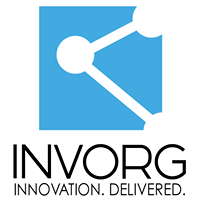Why digital transformation is critical for not-for-profit organizations
Digital transformation is important for any organization but why is it especially important for not-for-profit organizations?

Introduction
It is no secret that digital transformation is critical in this day and age for almost all industries. While that may be true, it is especially important that not-for-profit organizations embrace digital transformation as soon as possible. Digital transformation offers numerous benefits that can be especially utilized in the not-for-profit sector. Not-for-profit organizations are under increasing pressure to do more with less, they are facing increased pressure from donors, and their services are critical to the success of communities. In this article, we are going to take a look at these three reasons why not-for-profit organizations need to embrace digital transformation as soon as possible.
1) Organizations are under pressure to do more with less
While this is true for all organizations, this is especially true for not-for-profit organizations that often have limited resources. Digital transformation can help not-for-profit organizations be more efficient and effective with the resources they have. Reducing redundant tasks, automating tasks, and utilizing data are just some of the ways digital transformation can help not-for-profits do more with the resources they have.
Let’s look at an example, in the past, a not-for-profit organization might have had to rely on paper forms that needed to be manually entered into a database. This process is time-consuming, prone to errors, and requires a lot of resources. However, with digital transformation, this same process can be streamlined. Online forms can be used that are automatically entered into the database. This process is not only more efficient but also reduces the chance of errors. This is only one example, but there are many examples of digital solutions helping organizations utilize their resources in the best way possible.
2) Donors are increasingly expecting digital solutions
The trend in philanthropy is moving towards digital and mobile solutions. More and more donors are expecting organizations to offer digital solutions. This could include anything from online donation platforms to digital communication tools. These tools help increase transparency between the organization and its donors which increases the chances of acquiring more donors and keeping the donors they currently have happy. Not-for-profit organizations that don’t embrace digital transformation run the risk of being left behind by their donors and having a harder time securing new donors.
Here is an example: in the past, a not-for-profit organization might have sent out paper newsletters to their donors to deliver updates about the organization and projects happening within the organization. However, with digital transformation, they could utilize digital tools to communicate with their donors in real-time and give them updates as they happen. They can also make sending things like newsletters simpler because they can be sent electronically and offer a chance for donors to reply and ask questions. Digital transformation is a great way to meet the growing expectations of donors.
3) Services provided by not-for-profits are critical to the success of communities
Not-for-profit organizations provide many important services to communities. These services are often critical to the success of the community. The need for the services not-for-profit organizations offer is constantly growing. Digital transformation can help not-for-profit organizations meet the growing demand for their services.
Let’s look at an example, in the past, a not-for-profit organization might have provided services through a brick-and-mortar building. However, with digital transformation, they could provide their services online. This would allow them to reach more people in need of their services without needing to expand their brick-and-mortar facility. They could also utilize data to better understand the needs of their community and tailor their services to meet those needs. For example, if they analyze their data and notice that more people are requesting employment services, they might decide to direct more of their services there and limit less popular services. Digital transformation is one of the most powerful tools not-for-profit organizations have when trying to meet a growing need for their services.
Conclusion
Digital transformation is critical for not-for-profit organizations. It can help them utilize their resources more efficiently, meet the expectations of donors, and provide services to communities in need. Not-for-profit organizations that don’t embrace digital transformation will be left behind and will have a harder time achieving their goals. For not-for-profit organizations to not only survive but thrive, they will need to embark on their digital transformation as soon as possible.
INVORG is an organization dedicated to helping communities thrive. We have dedicated years to helping not-for-profit organizations embark on their digital transformation journey with confidence. If you are a member of a not-for-profit organization looking to embrace digital transformation, we want to hear from you! Visit our website www.invorg.com today for more information.
About the authors:
Hannah Hillier

Hannah is a professional content creator and writer. After graduation from the Public Relations program at Cambrian College, Hannah has gone on to start a successful freelance writing career. She is passionate about bringing words to life in a way that makes complicated topics more approachable. From website content to full articles, Hannah loves to find ways to communicate with any audience effectively. She currently lives and works in Sudbury Ontario.
Joseph Edward

Joseph founded INVORG focusing on a client-centric service delivery platform for innovating local organizations, not-for-profits, home and community support organizations, and small to medium-sized businesses. Joseph holds a Chief Information Officer Certification from Carnegie Melon University, USA, and from the US General Services Administration. He is an IT veteran with over 20 years of leadership in technology, including four years as CTO for the city of London.
